Fluffy Homemade French Bread Recipe: Bake Like a Pro Today
Fresh bread straight from the oven fills kitchens with an irresistible homemade French bread recipe that beckons everyone to the table.
Golden crusts and soft interiors create magic with simple ingredients.
Warm, crusty loaves signal comfort and satisfaction with every slice.
Baking bread connects us to centuries of culinary tradition and brings pure joy to cooking.
Each knead and fold builds anticipation for that perfect crisp exterior and pillowy center.
Professional bakers and home cooks alike treasure this classic recipe.
You’ll fall in love with the aroma and taste of freshly baked bread that transforms ordinary meals into extraordinary experiences.
Homemade French Bread Tasty Features
Ingredients for Homemade French Bread
Dry Ingredients:Wet Ingredients:Yeast Mixture:Optional Finishing Ingredient:How to Make Homemade French Bread
Step 1: Awaken the Yeast
Grab a bowl and mix warm water, yeast, and sugar.
Let the mixture sit quietly for about 5 minutes until it becomes beautifully foamy and bubbly.
This magical moment signals your yeast is ready to work its delicious magic.
Step 2: Create the Dough Foundation
Pour flour and salt into your mixer bowl.
Slowly incorporate the foamy yeast mixture, stirring until everything comes together into a shaggy, promising dough.
The transformation begins!
Step 3: Develop Dough Texture
Start adding remaining flour gradually.
Knead the dough until it becomes smooth and elastic.
The texture should feel soft and supple, no longer sticky to the touch.
Your hands are creating bread magic!
Step 4: First Peaceful Rise
Gently coat the dough with olive oil, ensuring complete coverage.
Cover the bowl and let it rest in a warm spot.
Give the dough 15-30 minutes to relax and grow (up to an hour for even better results).
Step 5: Shape Beautiful Loaves
Divide the dough into two equal portions.
Roll each piece into a lovely 15-inch rectangle.
Carefully roll each rectangle into a cylinder, pinching the seams closed to seal in all the wonderful flavors.
Step 6: Create Signature Scoring
Using a sharp knife, make three diagonal cuts across the top of each loaf.
These beautiful marks aren’t just decorative – they help the bread expand perfectly during baking.
Step 7: Second Rise
Cover the loaves and let them rise again for 30-60 minutes.
Watch them become beautifully puffy and full of potential.
Step 8: Bake to Golden Perfection
Slide the loaves into a preheated oven at 400°F.
Bake for 17-23 minutes until they turn a gorgeous golden brown.
Listen for the hollow sound when tapped – the ultimate bread-baking success signal!
Step 9: Final Flourish
Optional but delightful: brush the warm loaves with melted butter.
Slice, serve, and enjoy the incredible bread you’ve created from scratch!
Tips for French Bread Baking at Home
Fun Ways to Change Up French Bread
Homemade French Bread Serving Inspiration
Storing Homemade French Bread Fresh
FAQs
French bread has a simple ingredient list with just flour, water, yeast, and salt, creating a crispy exterior and soft interior unique to traditional French baking methods.
Yes, you can knead the dough by hand. Use a wooden spoon to mix initially, then knead on a floured surface for about 10 minutes until smooth and elastic.
When you mix yeast with warm water and sugar, it should become foamy and bubbly within 5-10 minutes. If no foam develops, your yeast is likely dead and won’t work for bread making.
Print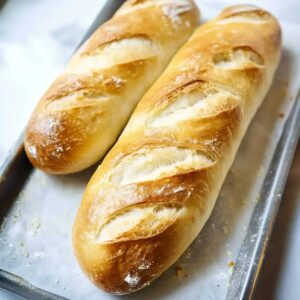
Homemade French Bread Recipe
- Total Time: 1 hour 20 minutes
- Yield: 12 1x
Description
Crusty, golden homemade French bread brings rustic charm from traditional French bakeries straight to kitchen counters. Warm slices with crisp exterior and pillowy center invite bread enthusiasts to savor authentic European baking magic with minimal ingredients and maximum flavor.
Ingredients
Main Ingredients (Flour and Liquid):
- 5 cups all-purpose or bread flour
- 2 cups warm water (105°F/40.5°C)
Leavening and Sweetening Agents:
- 1 tablespoon active dry yeast
- 2.5 teaspoons white sugar
Seasoning and Finishing Ingredients:
- 2.5 teaspoons table or fine sea salt
- 1 teaspoon olive oil
- Melted salted butter for brushing (optional)
Instructions
- Activate the yeast by blending warm water, yeast, and sugar in a mixing bowl. Allow the mixture to rest for 5 minutes until it becomes frothy and bubbly.
- In a large mixing bowl, combine flour and salt. Pour in the activated yeast mixture and blend until a cohesive dough begins to form.
- Gradually incorporate the remaining flour, kneading until the dough transforms into a smooth, elastic consistency that doesn’t stick to your hands.
- Lightly coat the dough with olive oil, place in a clean bowl, and cover with a damp cloth. Let it rest and expand for 15-30 minutes in a warm environment.
- Divide the dough into two equal portions. Roll each section into a long, rectangular shape, then carefully roll into cylindrical loaves, sealing the edges by pinching them together.
- Using a sharp knife, create three diagonal slashes across the top of each loaf, allowing steam to escape during baking.
- Place the shaped loaves on a baking sheet, cover, and let them rise again for 30-60 minutes until they appear puffy and increased in size.
- Preheat the oven to 400°F. Bake the loaves for 17-23 minutes, monitoring until they turn a rich golden brown and produce a hollow sound when tapped.
- Optional: Brush the freshly baked loaves with melted butter for added richness. Serve warm for the most delightful texture and flavor.
Notes
- Activate yeast precisely by using water between 100-110°F to ensure proper fermentation without killing the microorganisms.
- Handle dough gently during kneading to develop gluten structure without overworking, which can make bread tough and dense.
- Control moisture carefully by adding flour incrementally, stopping when dough becomes smooth and slightly tacky but not sticky.
- Try alternative flours like whole wheat or rye for different nutritional profiles and unique flavor variations.
- Prep Time: 1 hour
- Cook Time: 20 minutes
- Category: Snacks, Dinner
- Method: Baking
- Cuisine: French
Nutrition
- Serving Size: 12
- Calories: 150
- Sugar: 1 g
- Sodium: 180 mg
- Fat: 2 g
- Saturated Fat: 1 g
- Unsaturated Fat: 1 g
- Trans Fat: 0 g
- Carbohydrates: 29 g
- Fiber: 1 g
- Protein: 4 g
- Cholesterol: 0 mg

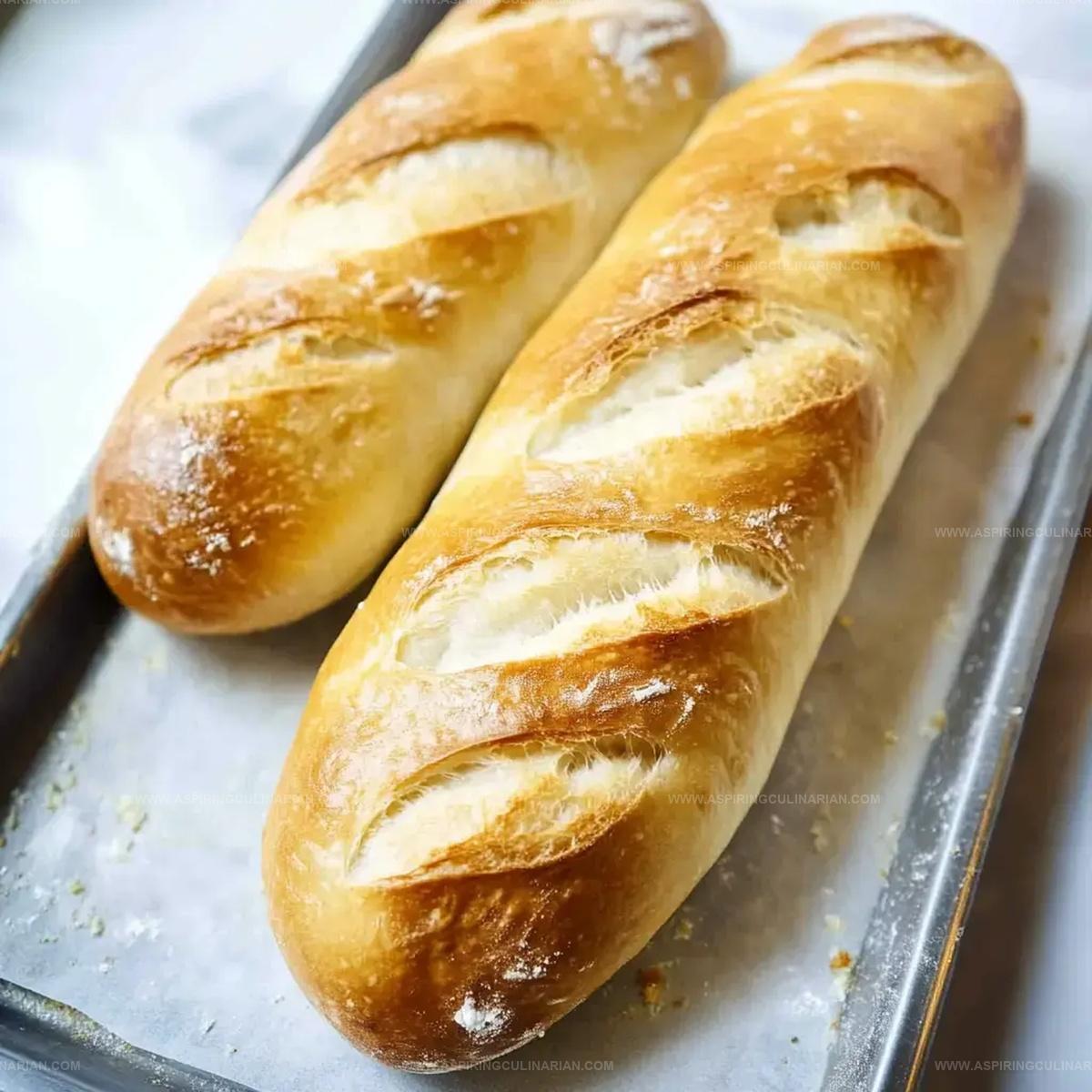
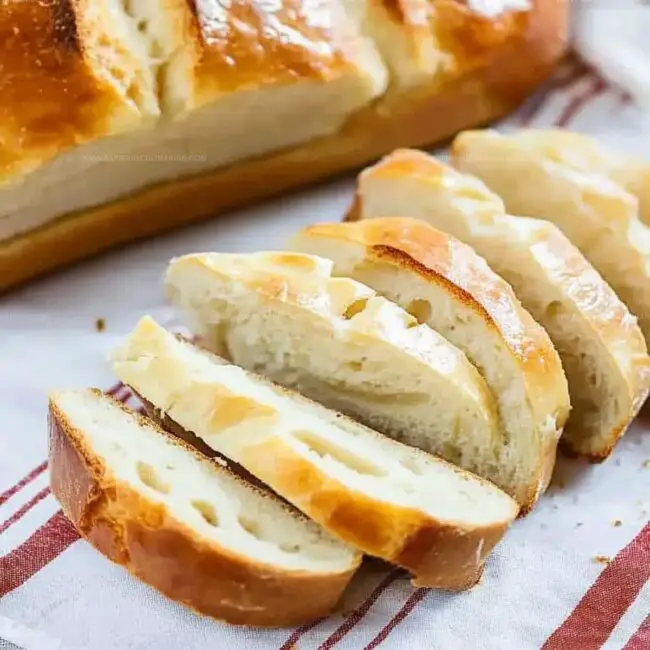
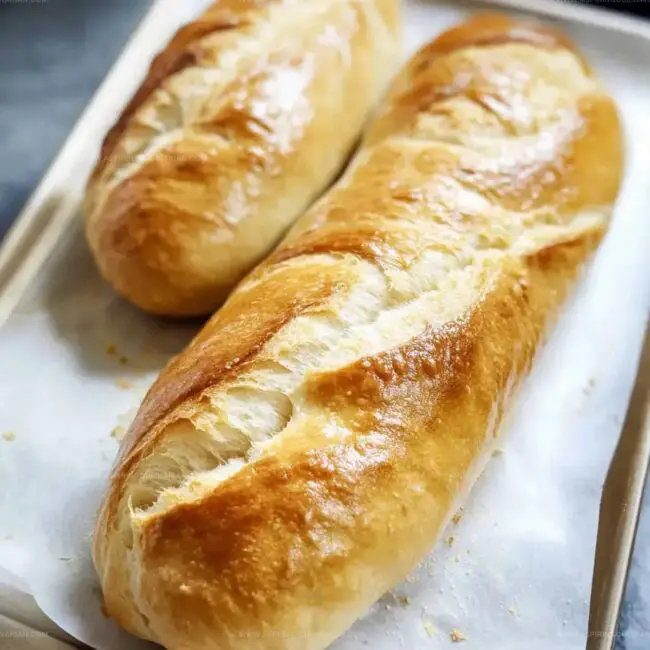
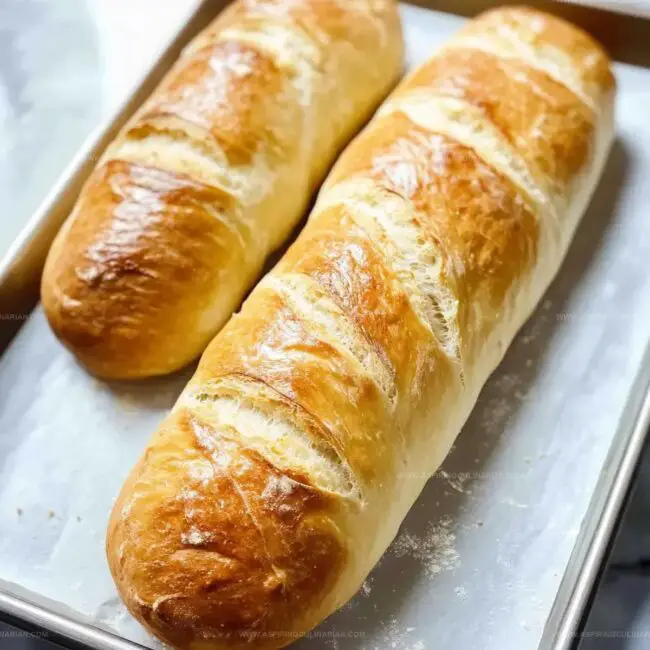
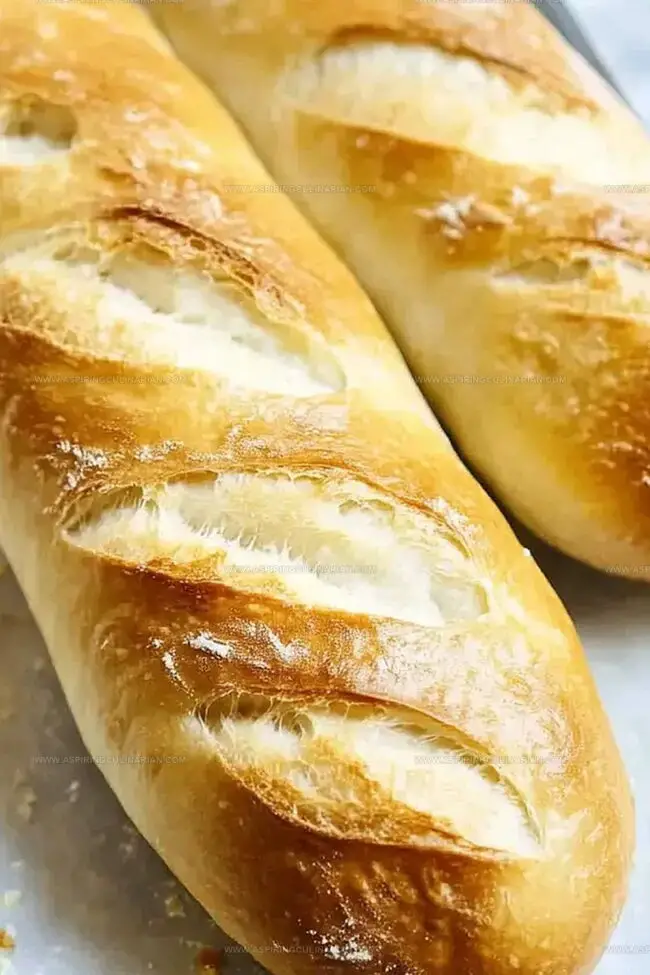
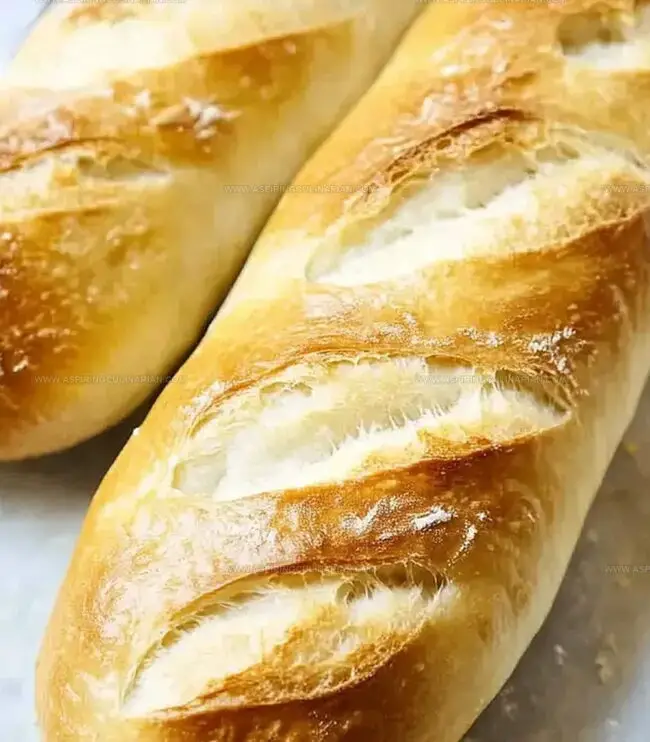
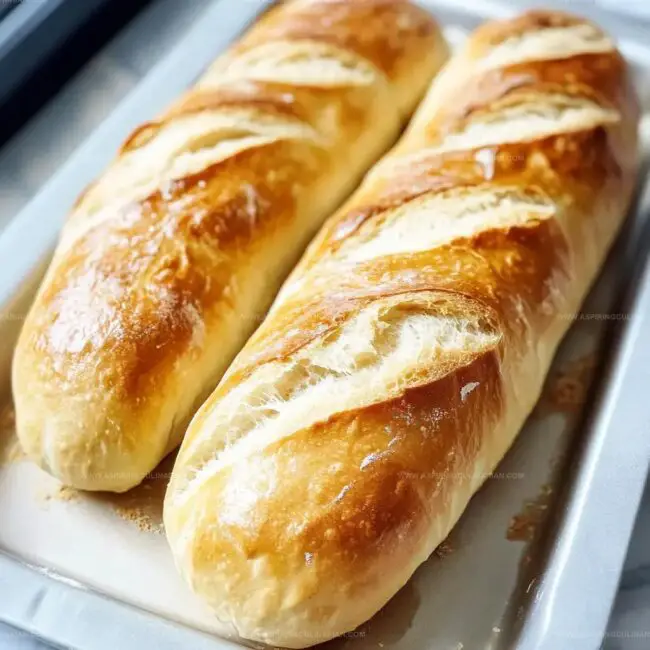
Lena Martinez
Contributing Writer & Culinary Educator
Expertise
Southwestern and Latin American cuisines, Vegetarian and plant-based recipe development, Culinary education and community outreach
Education
Santa Fe Community College, Santa Fe, NM
Certificate in Culinary Arts
Emphasized Southwestern cuisine and sustainable cooking practices
Lena grew up surrounded by the colors, spices, and traditions of the Southwest – flavors that sparked her love for bold, honest cooking. After earning her Culinary Arts certificate at Santa Fe Community College, she made it her mission to teach home cooks how to create flavorful, plant-powered meals without the fuss.
Her recipes are packed with vibrant ingredients, simple steps, and the kind of heart that turns a regular meal into something you’ll want to share. Outside the kitchen, Lena spends her time wandering farmers’ markets, trading family recipes, and helping young chefs find their voice through food.